Energetics of Herbs Used in Chinese Medicine Based on the Principles of Wellness, Restoration and Therapeutics
$193,00 $39,00
Energetics of Herbs in Chinese Medicine – Digital Download!
Let’s embark on a captivating adventure to uncover remarkable insights that spark your curiosity and elevate your understanding

Energetics of Herbs Used in Chinese Medicine Based on the Principles of Wellness, Restoration and Therapeutics
Overview
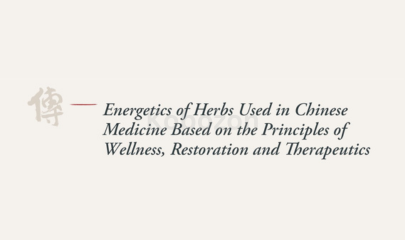
Energetics of Herbs in Chinese Medicine
The vast and vibrant world of Traditional Chinese Medicine (TCM) offers a unique perspective on health and wellness, deeply rooted in the principles of balance and harmony. The energetics of herbs in Chinese medicine encompasses not only the physical properties of the plants but also their ability to influence the body’s vital energies. Just like an intricate dance, where every movement is purposeful and harmonious, the application of herbs requires an awareness of how their properties align with the holistic needs of an individual. In TCM, where the focus is on wellness, restoration, and therapeutics, understanding these energetics becomes essential for promoting optimal health.
To embark on this journey of discovery, we must first appreciate how each herbal ingredient possesses its own unique energetics, akin to a musical note contributing to a symphonic masterpiece. This holistic approach allows practitioners to select herbs based on their temperature, flavor, and the specific organs or meridians they affect. Just as a painter selects colors to convey emotion and thought, a practitioner of TCM carefully chooses herbs to balance the bodily systems.
In the realm of TCM, herbs are classified based on their qualities. Warming herbs, like ginger and cinnamon, are typically chosen for conditions characterized by cold or stagnation, providing warmth and facilitating circulation. In contrast, cooling herbs, such as chrysanthemum and peppermint, are used to clear heat and inflammation, playing a crucial role during hot weather or heat-related illnesses. This temperature dichotomy mirrors the need for balance within the body, emphasizing the importance of both warming and cooling foods and herbs.
The energetic narratives of herbs also unfold through their flavors sweet, sour, bitter, pungent, and salty each carrying distinct qualities and therapeutic applications. For example, sweet herbs like licorice and honey act as harmonizers, nourishing and tonifying the body. Sour herbs, on the other hand, provide astringent effects, helping to stabilize bodily functions. The teachings of TCM encourage a palette of flavors, suggesting that a variety of herbal influences can optimize health in a manner similar to a balanced diet rich in diverse nutrients.
Ultimately, the energetics of herbs in Chinese medicine entails a deep interplay of qualities, flavors, and therapeutic properties, layering together to create a holistic treatment strategy aimed at restoring harmony within the body. By understanding and utilizing these energetics, practitioners can not only address existing health concerns but also foster preventative measures tailored to individual needs, highlighting TCM’s commitment to comprehensive wellness.
Principles of Wellness in Chinese Herbal Therapy
The foundational principles of wellness in Chinese herbal therapy embrace a holistic and integrative approach toward health that emphasizes balance, harmony, and individualized care. In TCM, wellness is viewed as an optimal equilibrium of the body’s energies qi (vital energy), blood, and the yin and yang components of physical and emotional states. These principles resonate deeply with the therapeutic applications of herbal remedies, paving the way for a profound understanding of the interconnectedness of the body, mind, and spirit.
At the heart of these principles is the concept of holistic healing, which underscores the importance of treating the person as a whole rather than focusing solely on presenting symptoms. This perspective recognizes that each individual embodies a unique constitution influenced by their emotional state, environmental factors, and lifestyle choices. As a result, practitioners meticulously assess a person’s specific health patterns before prescribing tailored herbal formulations. This process is akin to crafting an artistic masterpiece, where each element is deliberately selected to create a harmonious outcome.
Furthermore, balance be it between yin and yang or other vital energies is vital to wellness in TCM. When imbalances arise, whether they manifest as excess heat, dampness, or a deficiency, herbal remedies are used to re-establish equilibrium by nourishing or dispersing these energies. For example, in cases of excess yang often characterized by fever, irritability, and restlessness cooling herbs may be prescribed to restore balance. Conversely, in situations where yin is deficient, resulting in symptoms like fatigue and heat intolerance, warming herbs can reignite vitality. This ever-present dance of balance is central to the philosophy of wellness in Chinese herbal medicine.
Additionally, the Five Elements Theory forms a crucial aspect of TCM principles of wellness. Each herb is associated with a specific element (Wood, Fire, Earth, Metal, Water) corresponding to innately connected organ systems. By utilizing this classification, practitioners can channel the energetic properties of herbs to target specific health-related issues while simultaneously addressing the broader context of the individual’s health and how it relates to their overall environment.
Ultimately, the principles of wellness in Chinese herbal therapy foster a profound understanding of health that transcends mere symptom management. They emphasize the importance of treating the individual holistically and restoring balance through intentional and thoughtful herbal applications that embody the rich traditions of TCM.
Role of Herbs in Promoting Health
Herbs hold an esteemed position within Traditional Chinese Medicine as essential agents in the promotion of health and well-being. The utilization of these botanicals encompasses a wide array of applications that focus on nourishing the body, detoxifying harmful substances, and enhancing vital energy. At the intersection of nature and science, the efficacy of herbs beckons practitioners to delve deeper into their unique medicinal properties, empowering individuals to achieve optimal health through natural means.
One of the primary roles of herbs in TCM is their capacity to nourish and strengthen the body. Specific herbs, such as astragalus (Astragalus membranaceus) and goji berries (Lycium barbarum), are recognized for their immune-boosting properties, effectively enhancing the body’s natural defenses against pathogens and infections. By integrating these nutrient-rich herbs into daily dietary practices, individuals can actively foster resilience and vitality, akin to building a fortress that fortifies one’s health.
Moreover, detoxification emerges as another crucial aspect of herbal applications in TCM. Various herbs, such as dandelion (Taraxacum officinale) and burdock root (Arctium lappa), possess purifying characteristics that aid in the elimination of toxins from the body. These herbs work synergistically with the liver and digestive systems, promoting internal cleansing and optimal organ function. By harnessing these detoxifying properties, individuals can experience an invigorating sense of well-being, as their bodies are liberated from the weight of accumulated impurities.
Herbs also play a vital role in the restoration of health, particularly during recovery from illness or injury. Formulations such as rehmannia (Rehmannia glutinosa) are revered for their ability to rejuvenate and restore vitality, particularly in cases of kidney weakness. These restorative properties are further supported by a holistic understanding of the body’s interplay between various systems, affirming the importance of targeted herbal treatments in encouraging healing.
Incorporating herbs within the framework of TCM fosters an understanding of the broader relationship between natural elements and human health. The powerful contributions made by herbs extend beyond symptomatic relief; they nurture the body, promote detoxification, and facilitate healing. In this manner, herbs become not just a singular approach to medicine but rather a cornerstone in the intricate tapestry of wellness.
Balancing Yin and Yang Through Herbal Remedies
The concept of Yin and Yang represents a cornerstone of Traditional Chinese Medicine (TCM) and is integral to the understanding of health and wellness. This duality embodies the idea of balance, with Yin symbolizing qualities such as coolness, passivity, and nourishment, while Yang embodies warmth, activity, and vitality. Achieving equilibrium between these two opposing forces is paramount for optimal health, and herbal remedies are pivotal in restoring this delicate balance.
In practice, when a person presents symptoms indicative of an imbalance be it excessive heat, coldness, dryness, or dampness TCM practitioners employ specific herbs to adjust the Yin and Yang proportions. For instance, individuals experiencing symptoms related to excess Yang, such as restlessness, high fevers, or irritability, may benefit from cooling herbs like chrysanthemum and mint, which can help to disperse heat and restore a sense of calm within the body.
Conversely, when faced with deficiencies in Yang energy, manifested through fatigue, cold limbs, or lack of vitality, warming herbs become essential players in the treatment plan. Herbs like ginseng or cinnamon may be prescribed to invigorate Yang energy, stimulating circulation and promoting vitality.
Furthermore, the balancing act of Yin and Yang in herbal therapy extends to understanding not only physical symptoms but also emotional states. Emotional turbulence such as anxiety or depression can reflect imbalances within these energies. Herbs that nourish Yin while soothing the spirit, such as passionflower (Passiflora incarnata) or lotus seeds (Nelumbo nucifera), can be instrumental in promoting emotional well-being, highlighting the interconnectedness of emotional and physical health in TCM.
Moreover, the application of Yin-Yang principles does not exist in isolation; it also integrates with the Five Elements Theory in TCM. Each herb can correspond to one of the five elements, further targeting imbalances in specific organ systems. This interconnectedness amplifies the effectiveness of herbal remedies, creating a tailored approach to wellness.
At its essence, the practice of balancing Yin and Yang through herbal remedies reflects the wisdom of TCM in addressing the whole person. It emphasizes a personalized approach where practitioners seek to restore harmony within the body, guiding individuals on their journey to health and wellness.
The Concept of Qi and Its Relationship with Herbs
The concept of Qi, often translated as “vital energy,” is central to Traditional Chinese Medicine (TCM) and represents the life force that flows through all living beings. Qi plays a vital role in maintaining health and balance within the body. In TCM, the unobstructed flow of Qi is essential for overall well-being; when Qi is stagnant, deficient, or blocked, it can lead to various health issues. Hence, herbs are purposefully selected to facilitate the flow, balance, and enhancement of Qi, embodying the interconnectedness of natural elements and the human body.
Herbal remedies are utilized to influence Qi based on their energetics each herb has a distinct impact on Qi, whether it be invigorating, dispersing, or tonifying. For instance, ginseng (Panax ginseng), a renowned qi tonic, is often prescribed to boost energy levels and enhance the body’s resilience against stressors. It acts as a supportive agent, reviving Qi and fostering vitality. In contrast, peppermint (Mentha piperita) is employed to disperse stagnant Qi, providing relief from discomfort, such as bloating or digestive disturbances.
Moreover, the role of herbs in supporting the smooth flow of Qi can be likened to the flow of a river. When the river flows freely, nourishing the surrounding landscape, life thrives and flourishes. However, when obstacles obstruct its course, stagnation occurs, leading to potential harm. In TCM, the goal of using herbs often mirrors this analogy by removing blockages and promoting the optimal flow of Qi, individuals can restore health and vitality.
Herbs also interact with the body’s meridian system, the network through which Qi flows. Each meridian corresponds to specific organs and bodily functions, and through targeted herbal formulations, practitioners can enhance the flow of Qi in particular meridians. This targeted approach allows for comprehensive treatments that address both surface-level symptoms and deeper, root-level imbalances.
Ultimately, the concept of Qi and its relationship with herbs is a profound aspect of TCM that highlights the interplay between nature and human health. By understanding and utilizing the energetics of herbs to nurture and enhance Qi, practitioners empower individuals on their health journeys, directing them toward balance and restoration.
Restoration of Health with Chinese Herbal Treatment
Restoration of health is a fundamental goal in Traditional Chinese Medicine (TCM), emphasizing the importance of re-establishing balance within the body’s systems. Herbal treatments, in particular, are instrumental in this restorative process, employing a holistic approach that integrates various therapeutic principles. Through the careful selection and application of herbs, practitioners aim to support the body in healing itself, providing not only relief from symptoms but also a path toward comprehensive wellness.
A hallmark of TCM herbal therapy is the unique formulations that target both the root cause of health issues and the symptoms they present. Each herbal remedy is often a synergistic blend of multiple ingredients designed to form a coherent treatment strategy. For example, a formula for strengthening the immune system may include astragalus and echinacea, both heralded for their immune-enhancing properties. This botanical symphony embodies the holistic philosophy inherent in TCM, where the combination of herbs creates a more complex and effective healing influence than individual components alone.
The energetic properties of the herbs play a crucial role in restoration. For instance, herbs categorized as warming, cooling, or neutral can be strategically chosen based on the patient’s constitution and current health condition. This tailored approach allows for individualized treatments that account for each person’s unique imbalances, making TCM a personalized form of health care.
Moreover, herbal treatments often extend beyond merely physical symptoms. Emotional and mental health are significant components of holistic restoration in TCM, with many herbal remedies designed to soothe the spirit and uplift mood. For example, herbs such as jujube dates (Ziziphus jujuba) may be integrated into formulations to promote relaxation and reduce anxiety, reflecting the interwoven nature of mental and physical well-being.
In the realm of health restoration, it’s important to recognize that TCM does not regard recovery as a destination but rather a continuous journey. By fostering resilience through ongoing herbal support, individuals are equipped with the tools necessary for sustained health and vitality. Restoration with Chinese herbal treatment encapsulates a dynamic process that integrates lifestyle changes, dietary modifications, and emotional nurturing alongside the rich herbal traditions of TCM. This comprehensive approach fosters not only recovery but also an enduring state of wellness.
Herbal Formulations for Recovery and Rejuvenation
The art of crafting herbal formulations in Traditional Chinese Medicine (TCM) is a nuanced and intricate process, specifically designed to facilitate recovery and rejuvenation. Each formulation comprises a careful selection of herbs according to their properties, energetics, and intended therapeutic outcomes. This orchestration of botanicals serves as a powerful tool in supporting the body’s ability to heal, restore, and revitalize itself.
During recovery, herbal formulations are often tailored to address the specific physical and emotional needs of the patient. One key principle is the integration of synergistic herbs that work together to enhance overall effectiveness. For instance, a formulation designed to support post-illness recovery might combine revitalizing herbs like ginseng (Panax ginseng) with nourishing ingredients such as reishi mushrooms (Ganoderma lucidum) and goji berries (Lycium barbarum). This harmonious blend not only boosts immune function but also replenishes energy, epitomizing TCM’s holistic philosophy.
Additionally, herbal formulations can be crafted to address specific organ systems that may require rejuvenation. For example, the liver is often targeted for its role in detoxification and emotional well-being. A herbal formula containing herbs such as milk thistle (Silybum marianum) and dandelion (Taraxacum officinale) can support liver function while facilitating detoxification, promoting both physical recovery and emotional clarity.
Moreover, the healing properties of herbs are often augmented by their energetic qualities, aligning with TCM principles of wellness. For example, warm herbs may be used in formulations for individuals experiencing coldness or stagnation, while cooling herbs can relieve heat-related conditions. This dynamic approach ensures that the formulations are customized not only for symptoms but also for the individual’s unique constitution, thereby facilitating personal rejuvenation.
In the context of recovery, TCM also acknowledges the importance of dietary and lifestyle recommendations alongside herbal formulations. Incorporating nourishing foods, practicing stress-relief techniques, and engaging in gentle movement can synergize with herbal support, establishing a comprehensive framework for rejuvenation.
Ultimately, herbal formulations for recovery and rejuvenation within TCM represent a careful balance of art and science. They harness the power of nature, the knowledge of traditional practices, and the understanding of individual needs, illustrating TCM’s commitment to fostering optimal health and well-being.
The Role of Adaptogenic Herbs in Stress Relief
In the ever-busy modern world, the role of adaptogenic herbs in stress relief has garnered increasing attention, particularly within the framework of Traditional Chinese Medicine (TCM). Adaptogens are unique plants believed to enhance the body’s ability to cope with stress, balancing the physiological and emotional responses to stressors. These herbs serve as powerful allies in restoring equilibrium and promoting resilience, aligning seamlessly with TCM’s overarching mission of wellness and balance.
Adaptogenic herbs such as ginseng (Panax ginseng), ashwagandha (Withania somnifera), and reishi mushrooms (Ganoderma lucidum) hold significant therapeutic potential. Their efficacy stems from their ability to modulate the body’s stress response, enhancing vitality without inducing adverse effects or dependency. For example, ginseng is revered for its qi tonifying properties, boosting energy levels while helping to regulate stress and fatigue. By nourishing Qi, ginseng plays a pivotal role in counteracting exhaustion brought on by chronic stress.
Moreover, adaptogens also contribute to emotional balance, addressing the mental and emotional facets of stress. Herbs like schisandra (Schisandra chinensis) are celebrated for their ability to relieve anxiety, promote calmness, and enhance cognitive function. In this capacity, adaptogens not only support physical health but also nurture mental clarity, reflecting the holistic approach of TCM.
Detoxification practices often incorporate adaptogenic herbs, as these plants assist in regulating hormonal levels and supporting detoxification pathways, which can be compromised during periods of stress. The integration of adaptogens into detox regimes emphasizes how TCM recognizes the interconnectedness of physical and emotional health. The appropriate selection of these herbs can elevate the efficacy of detoxification protocols, leading to more comprehensive rejuvenation.
The principles of wellness and restoration are inherent in the role of adaptogenic herbs, highlighting the importance of individualized care in TCM. Practitioners assess each person’s unique circumstances to craft tailored formulations that align with their specific needs and constitutional types. This personalized approach ensures that patients receive optimal benefits from these herbs, reaffirming the commitment of TCM to holistic well-being.
In conclusion, adaptogenic herbs play an essential role in stress relief, not only by mitigating physical and emotional responses to stressors but also by fostering overall balance within the body. Their unique properties align with TCM’s principles, offering individuals an invaluable resource toward achieving harmony in today’s fast-paced environment.
Detoxification Practices Using Herbal Therapies
Detoxification is an essential aspect of holistic health care in Traditional Chinese Medicine (TCM), where the aim is to cleanse the body of toxins and restore optimal health. Herbal therapies play a vital role in this process, offering natural solutions that support the body’s innate detoxification mechanisms. In TCM, detoxification transcend mere elimination of substances; it encompasses the restoration of balance and harmony within the body.
The selection of herbs for detoxification is informed by their specific properties and energetics. For instance, herbs like dandelion (Taraxacum officinale) and burdock root (Arctium lappa) are known for their cleansing properties, particularly concerning liver function. Dandelion works synergistically with the liver to eliminate toxins and enhance digestion, while burdock root serves as a blood purifier that detoxifies systemic stagnation. These herbs reflect TCM’s commitment to natural regeneration, demonstrating how detoxification can be achieved through the application of nourishing botanicals.
Moreover, herbal detoxification practices often target the different systems of the body, ensuring a comprehensive approach to cleansing. For example, herbs such as chrysanthemum (Chrysanthemum morifolium) and honeysuckle (Lonicera japonica) can clear heat and toxins, offering relief from conditions such as sore throats and skin eruptions. This multi-faceted approach to detoxification allows individuals to address both internal and external manifestations of toxicity.
Incorporating lifestyle practices alongside herbal therapies further enhances detoxification efforts. TCM encourages the integration of gentle movement, such as tai chi or qi gong, which facilitates the movement of Qi and lymphatic fluids, promoting a more effective detox process. Nutrient-dense diets rich in fruits and vegetables also complement the detox regimen, ensuring that the body receives adequate nourishment throughout the cleansing phase.
Vital to the process of detoxification in TCM is the understanding that every individual possesses a unique constitution that influences their response to detox therapies. Practitioners tailor herbal recommendations according to personalized diagnostics, facilitating a more effective and balanced detox experience.
Ultimately, detoxification practices utilizing herbal therapies in TCM exemplify a commitment not only to physical wellness but also to emotional and psychological balance. By tapping into the natural potency of herbs and incorporating them within comprehensive detox programs, individuals can experience profound rejuvenation and restoration of health.
Therapeutic Applications of Chinese Herbs
Incorporating Chinese herbs into therapeutic applications has steadily gained recognition in the realm of holistic health, especially as an alternative and complementary approach in the United States. Traditional Chinese Medicine (TCM) offers a comprehensive and systematic framework for understanding the healing power of herbs, emphasizing their roles in promoting wellness and treating a variety of health concerns.
Chinese herbs are employed to tackle a myriad of ailments, including respiratory issues, digestive disorders, and stress-related conditions. For example, herbs like codeine and licorice play a crucial role in alleviating cough and throat inflammation, easing the discomfort associated with respiratory challenges. Similarly, for digestive disorders, herbal formulas such as ba zhen tang, a blend of various herbs, serve to harmonize the digestive system and restore normal function.
Furthermore, targeted herbal treatments are often designed to meet specific needs, using multi-ingredient formulations to address individual symptoms. Tailoring treatments not only aligns with TCM’s holistic philosophy but also reflects the growing demand for personalized healthcare solutions in modern medical practice. For instance, formulations designed for stress relief may include adaptogenic herbs, such as schisandra and ashwagandha, enhancing the body’s capacity to cope with pressure and restoring a sense of calm amidst chaos.
Understanding the energetics of these herbs plays a pivotal role in TCM therapeutic applications. Each herb carries specific properties such as warming, cooling, or bitter qualities that allow practitioners to choose appropriate remedies aligned with the individual’s unique constitution and imbalances. By leveraging these characteristics, practitioners can create formulas that tackle not only superficial symptoms but also the underlying causes of health concerns.
The regulatory landscape surrounding Chinese herbal remedies in the U.S. has become more nuanced, as practitioners navigate the balance between traditional knowledge and modern evidence-based approaches. Increasingly, TCM practitioners blend ancient wisdom with scientific research, allowing for a more robust understanding of herbal efficacy and safety.
In summary, the therapeutic applications of Chinese herbs in the United States signify a growing awareness of holistic health solutions that prioritize personalized care and the interconnectedness of the body, mind, and environment. This synergy empowers individuals to engender their health journeys while embracing the timeless practices of Traditional Chinese Medicine.
Targeted Herbal Treatments for Common Ailments
Within the landscape of Traditional Chinese Medicine (TCM), targeted herbal treatments for common ailments encompass a wide range of customized therapies designed to address the specific health concerns of individuals. By understanding the energetics and properties of various herbs, practitioners can create formulations that align with the unique constitution and imbalances witnessed in their patients. This personalized approach exemplifies the efficacy of TCM in offering tailored remedies for diverse health issues.
For instance, when dealing with respiratory ailments such as bronchitis or allergies, practitioners often recommend herbal blends that include ophiopogon (Ophiopogon japonicus) and perilla leaves (Perilla frutescens). These herbs help to relieve cough, reduce phlegm, and alleviate symptoms of congestion, effectively targeting specific respiratory concerns. The synergistic effects of these herbs represent a hallmark of TCM philosophy, emphasizing the importance of using combinations over single herbs to enhance therapeutic impact.
Digestive issues are another common concern addressed through targeted herbal treatments. For example, formulae containing ginger and licorice may be employed to manage symptoms of indigestion or bloating, relieving discomfort while promoting healthy digestion. By considering the energetics ginger’s warming properties combined with licorice’s harmonizing effects practitioners can offer solutions that encompass both immediate relief and long-term digestive health.
Moreover, herbal remedies have shown significant promise in managing stress and anxiety. Formulations like Xiao Yao San, which incorporate herbs such as peony and poria, are designed to address emotional imbalances while promoting relaxation and emotional stability. These targeted treatments underscore the appreciation of holistic healing, where physical, emotional, and even spiritual well-being converge.
By leveraging the wide array of available herbs and their respective properties, TCM practitioners are equipped to offer nuanced treatments for common ailments that extend beyond superficial symptom management. This approach not only fosters a deeper understanding of health and wellness but also empowers individuals to embrace a comprehensive healing journey.
Integrating Herbal Therapy with Conventional Medicine
The integration of herbal therapy with conventional medicine is a burgeoning field that reflects a growing recognition of the value of holistic and multifaceted approaches to health care. As Traditional Chinese Medicine (TCM) gains traction within Western medicine, the evidence supporting the efficacy of herbal remedies continues to evolve, offering a potential bridge between the principles of TCM and those of contemporary medical practices.
This integrative approach is particularly relevant when it comes to treating chronic conditions, where herbal remedies can enhance the results of conventional medical treatments. For instance, patients undergoing chemotherapy may benefit from the incorporation of adaptogenic herbs like astragalus and ginseng to help mitigate side effects and support immune function. The synergy between pharmacological interventions and herbal therapies demonstrates how TCM principles can complement modern medical practices, ultimately enhancing patient care and improving outcomes.
Moreover, evidence-based research is playing an essential role in establishing the credibility of herbal therapy within clinical settings. Real-world case studies have illustrated the successful use of Chinese herbs in managing various conditions. For example, a study indicated that a combination of Chinese herbs, including angelica and licorice, successfully reduced chronic pain in individuals who had not responded well to conventional therapies. This compelling evidence validates the role of herbal interventions as vital components of an integrative health strategy.
In addition to enhancing therapeutic benefits, integrating herbal remedies within conventional medicine can also address concerns associated with pharmaceutical treatments, such as side effects and dependency. Patients seeking comprehensive wellness solutions often find comfort in combining safe herbal therapies alongside prescribed medications to address their health concerns without exacerbating side effects.
However, effective integration relies heavily on communication and collaboration between practitioners of both traditional and conventional medicine. Healthcare providers must remain informed about the properties and potential interactions of various herbs to ensure that patient care remains safe and effective. Increased dialogue among practitioners facilitates a comprehensive understanding of the patient’s needs while nurturing a more inclusive approach to health care.
In conclusion, the integration of herbal therapy with conventional medicine exemplifies a paradigm shift towards more holistic healthcare solutions. By recognizing the potential benefits of combining TCM principles with evidence-based research, practitioners can empower patients on their wellness journeys while fostering a deeper understanding of the interconnectedness of health within the mind, body, and spirit.
Case Studies of Successful Herbal Interventions
As Traditional Chinese Medicine (TCM) continues to gain recognition within the realm of integrative health, numerous case studies illustrating successful herbal interventions have emerged. These clinical examples serve as powerful testaments to the efficacy of harnessing the healing properties of herbs alongside conventional therapies, offering insights into their practical applications.
One prominent case study focused on patients with Parkinson’s Disease, where a traditional herbal formula, Xiao Feng San, was integrated with standard medication. Over a series of months, participants reported significant improvements in both motor function and quality of life. Remarkably, one patient noted more substantial mobility, with fewer episodes of tremors highlighting the potential of TCM to enhance conventional treatment regimens. This successful intervention illustrates how targeted herbal approaches can promote better outcomes in chronic neurological conditions.
Another notable case involved the management of chronic stress and anxiety through herbal therapy. A systematic review analyzing the effects of Chinese herbal medicines on emotional well-being revealed that formulations combining herbs like schisandra (Schisandra chinensis) and jujube (Ziziphus jujuba) led to a marked reduction in anxiety symptoms over a 12-week period. Participants not only experienced to improved mood but also reported better sleep and overall well-being. This study underscores the value of TCM as a complementary approach to mental health care, integrating smoothly with conventional therapies to provide a more holistic solution.
In yet another example, patients suffering from recurrent respiratory infections underwent treatment with a combination of herbs, including honeysuckle and isatis (Isatis tinctoria). Over three months, there was a notable decrease in the frequency of respiratory illnesses, with patients reporting fewer sick days and a marked improvement in their overall immunity. This highlights how TCM herbal treatments can enhance immunity and support recovery in individuals prone to frequent infections.
These case studies not only illustrate the transformative power of herbal interventions but also pave the way for broader acceptance and application of TCM in clinical settings. By combining ancient wisdom with modern research methodologies, these examples embody the potential for synergistic treatments that address both the symptoms and root causes of ailments. As practitioners nod toward evidence-based reforms, the promise of integrating TCM herbal therapies into conventional medical practices becomes ever more evident.
Energetic Properties of Specific Herbs
The exploration of energetic properties in specific herbs is paramount in Traditional Chinese Medicine (TCM), where each herb is imbued with unique qualities that resonate with various organ systems and physiological processes. Understanding these energetic properties allows practitioners to tailor their approaches to align with the individual needs of patients, fostering a more holistic view of health and wellness.
- Ginger (Sheng Jiang):
- Energetic Properties: Ginger is classified as a warming herb, known for its spicy and invigorating qualities.
- Applications: It is often used to stimulate digestion, promote circulation, and alleviate symptoms like nausea and cold-induced discomfort. Particularly effective in managing digestive disturbances, ginger is commonly integrated into remedies for colds and flu.
- Chrysanthemum (Ju Hua):
- Energetic Properties: In contrast to ginger, chrysanthemum is a cooling herb, characterized by its sweet and slightly bitter flavor.
- Applications: It is primarily employed to clear heat and inflammation, particularly beneficial for symptoms such as fevers, headaches, and eye strain. Its cooling effects help soothe the body, promoting relaxation and alleviating heat-related conditions.
- Ginseng (Ren Shen):
- Energetic Properties: Ginseng carries warming properties with a sweet flavor profile, serving as a key tonic in TCM.
- Applications: Known for its ability to boost energy levels and strengthen the immune system, ginseng is frequently prescribed to combat fatigue, stress, and general weakness reinforcing its status as a revered adaptogen in herbal medicine.
- Dandelion (Pu Gong Ying):
- Energetic Properties: Dandelion is a cooling herb with a bitter taste, renowned for its detoxifying attributes.
- Applications: It effectively purges heat and facilitates liver detoxification. By promoting bile production and relieving inflammation, dandelion serves as an effective remedy for both digestive issues and skin conditions.
- Reishi Mushroom (Ling Zhi):
- Energetic Properties: Recognized for its cooling effects, the reishi mushroom is often referred to as the “mushroom of immortality.”
- Applications: It is primarily used to nourish the spirit, reduce stress, and bolster immunity, embodying the TCM principles of enhancing well-being through energetic grounding and spiritual balance.
Exploring the energetic properties of specific herbs represents more than a simple categorization; it reflects the intricate and rich tapestry of TCM. By comprehending these qualities, practitioners can effectively address health conditions, helping individuals restore balance and vitality through the powerful lens of herbal medicine.
Warm and Cold Natured Herbs and Their Uses
In Traditional Chinese Medicine (TCM), herbs are classified based on their energetic qualities, primarily characterized as warm or cold. This classification is pivotal as it informs practitioners about how these herbs can be utilized to maintain or restore balance within the body, addressing specific health concerns.
Warm Natured Herbs:
- Ginger (Sheng Jiang):
- Properties: Warm and spicy.
- Uses: Provides relief from nausea and promotes digestion by stimulating metabolic activity. It is especially useful for individuals experiencing cold symptoms or digestive stagnation.
- Cinnamon (Gui Zhi):
- Properties: Warm and sweet.
- Uses: Often used to alleviate abdominal cramps and menstrual pain, while also encouraging circulation. Ideal for treating conditions associated with coldness in the body.
- Ginseng (Ren Shen):
- Properties: Slightly warming and sweet.
- Uses: Supports vitality, enhances energy levels, and boosts the immune system. It is particularly effective in combating fatigue and can encourage a state of vigor and wellness.
Cold Natured Herbs:
- Peppermint (Bo He):
- Properties: Cooling and aromatic.
- Uses: Frequently prescribed for digestion and respiratory issues. It alleviates heat symptoms such as headaches and fevers and brings relief to digestive discomfort.
- Ophiopogon (Mai Men Dong):
- Properties: Cold and sweet.
- Uses: Nourishes the lungs and aids in relieving dry coughs, making it particularly beneficial for individuals suffering from chronic conditions of dryness or heat in the body.
- Dandelion (Pu Gong Ying):
- Properties: Cold and bitter.
- Uses: Known for its powerful detoxifying properties, it reduces heat within the body, being extensively used for treating skin infections and other inflammatory conditions.
The differentiation between warm and cold herbs in TCM serves as a guiding principle in crafting individualized treatment plans. When selecting herbs, practitioners evaluate the current health condition, the individual’s constitution, and any signs of energetic imbalances. This comprehensive approach underscores the TCM philosophy of promoting health through balance, ensuring that treatments align harmoniously with the patient’s needs.
Sweet, Sour, Bitter, and Pungent Flavors in Healing
In the realm of Traditional Chinese Medicine (TCM), the classification of herbs extends beyond mere physical properties; it encompasses their flavors sweet, sour, bitter, and pungent each contributing unique therapeutic effects. Understanding these flavors empowers practitioners to design targeted herbal treatments that resonate with individual health conditions, ultimately fostering a holistic approach to healing.
- Sweet Flavor:
- Energetic Properties: Nourishing and harmonizing, sweet herbs tonify and bolster the body’s vitality.
- Examples:
- Licorice (Gan Cao): Often included in herbal formulas to harmonize other ingredients and alleviate coughs.
- Jujube Dates (Da Zao): Build energy and blood, promoting a sense of calm and relaxation.
- Sour Flavor:
- Energetic Properties: Astringent and stabilizing, sour herbs help to tonify and stabilize bodily functions and fluids.
- Examples:
- Hawthorn (Shan Zha): Known to aid digestion and promote cardiovascular health.
- Schizandra (Wu Wei Zi): Supports liver function and assists in stress resilience.
- Bitter Flavor:
- Energetic Properties: Cooling, drying, and detoxifying, bitter herbs clear heat and promote digestion.
- Examples:
- Dandelion (Pu Gong Ying): Detoxifies the liver while supporting overall digestive health.
- Bitter Melon (Ku Gua): Helps regulate blood sugar levels and clear excess heat.
- Pungent (Spicy) Flavor:
- Energetic Properties: Invigorating and energizing, pungent herbs primarily help in moving Qi and blood.
- Examples:
- Ginger (Sheng Jiang): Stimulates digestion and alleviates nausea while warming the body.
- Garlic (Da Suan): Renowned for its antimicrobial properties, which enhance immune function while also promoting circulation.
The interplay of these flavors correlates with the meridian system, guiding practitioners in the selection of herbal remedies tailored to each patient’s needs. The flavors also radiate into emotional and mental health, with specific herbs supporting various states of well-being. For instance, the sweetness of jujube can promote calmness and emotional equilibrium, while the bitterness of dandelion may reflect the need to clear stagnant emotions.
In summary, the exploration of flavors in TCM highlights the sophisticated philosophy underlying herbal medicine. By embracing the characteristics of sweet, sour, bitter, and pungent herbs, practitioners are equipped to craft effective treatments that resonate with the entirety of a person body, mind, and spirit.
Herbs Classified by Their Energetic Meridians
Within Traditional Chinese Medicine (TCM), the classification of herbs by their energetic meridians is a foundational principle that enhances therapeutics and health assessment. This approach recognizes that each herb can influence specific organ systems and pathways within the body. By understanding these meridian relationships, practitioners can tailor treatments to target specific health concerns, ensuring a holistic approach to wellness.
- Liver Meridian:
- Key Herbs:
- Chrysanthemum (Ju Hua): Known for its cooling properties, it supports liver health and helps clear heat.
- Schizandra (Wu Wei Zi): Supports liver function and aids in stress resilience.
- Key Herbs:
- Spleen Meridian:
- Key Herbs:
- Licorice (Gan Cao): Harmonizing and tonifying, it nourishes the spleen and alleviates fatigue.
- Dandelion (Pu Gong Ying): Detoxifies and promotes healthy digestive function by supporting the spleen’s role in digestion.
- Key Herbs:
- Lung Meridian:
- Key Herbs:
- Peppermint (Bo He): Clears heat from the lungs and alleviates respiratory congestion.
- Ophiopogon (Mai Men Dong): Nourishes the lungs and helps address issues like dry cough and throat discomfort.
- Key Herbs:
- Kidney Meridian:
- Key Herbs:
- Rehmannia (Sheng Di Huang): Nourishes kidney yin, supports vitality, and promotes overall health.
- Fu Ling (Poria cocos): Strengthens the spleen and supports water metabolism, targeting kidney health.
- Key Herbs:
- Heart Meridian:
- Key Herbs:
- Lotus Seeds (Lian Zi): Calm the spirit and nourish the heart, promoting emotional balance.
- Sour Jujube (Suan Zao Ren): Known for its calming properties, it helps address insomnia and restlessness.
- Key Herbs:
By classifying herbs according to their energetic meridians, TCM practitioners can form targeted treatment plans that address the interconnectedness of organs, energetics, and emotional states. For instance, an imbalance in the liver might present with irritability, suggesting that herbs aimed at supporting liver function and clearing heat should be integrated into the treatment plan.
Furthermore, understanding how specific herbs correspond to meridians allows practitioners to evaluate the energy flow within the body thoroughly. Any blockages or stagnation can be addressed through appropriately chosen herbs, thus promoting overall health and well-being.
Preparation and Dosage of Herbal Remedies
The preparation and dosage of herbal remedies within Traditional Chinese Medicine (TCM) play pivotal roles in ensuring the effectiveness and safety of the treatments. Each herb necessitates specific preparation techniques that enhance the extraction of its medicinal properties, while the appropriate dosage tailors the treatment to individual needs and conditions.
Methods of Herbal Preparation: Decoctions and Infusions
- Decoctions:
- Description: Decoctions involve simmering tougher plant parts like roots and barks over a sustained period to extract their active compounds.
- Preparation Steps:
- Measure herbs (3-4 tablespoons per quart of water).
- Combine in a pot and cover with cold water, slowly bringing to a simmer.
- Cover the pot and let simmer for 20-60 minutes, depending on the herb’s hardness.
- Strain and serve.
- Dosage: Typically administered in doses of ½ to 1 cup, taken 1-3 times daily.
- Infusions:
- Description: Infusions are ideal for softer plant parts like leaves and flowers, relying on steeping in hot or cold water.
- Preparation Steps:
- For hot infusions, use 1-3 tablespoons of dried herbs, boiling water slightly below boiling point to steep for 15 minutes to an hour.
- For cold infusions, steep herbs in cold water for 8-12 hours.
- Dosage: Varies widely; general recommendations range from 1 cup to several cups per day.
Importance of Proper Dosage in Herbal Effectiveness
- Safety and Efficacy: Correct dosing maximizes therapeutic effects while minimizing potential risks. Although herbs have a wider safety margin than pharmaceuticals, improper dosing can lead to adverse effects.
- Individual Variability: Factors such as body weight, health status, and sensitivity to herbs necessitate that dosages be tailored to the individual.
- Forms of Preparation: The method of preparation affects potency; tinctures are more concentrated than teas and require lower dosages.
- Acute vs. Chronic Conditions: Dosage differs between acute and chronic conditions. Acute cases may benefit from larger, more frequent doses, whereas chronic conditions often require smaller dosages taken less frequently.
When integrating preparation techniques and proper dosages, TCM emphasizes individualized assessments to ensure efficacy. Practitioners consider the specific herb’s energetics in crafting formulations that align with each patient’s constitution and desired outcomes.
Modern Research on Traditional Chinese Herbal Medicine
Modern research on Traditional Chinese Herbal Medicine (TCHM) has significantly advanced our understanding of the therapeutic efficacy, mechanisms of action, and safety profiles of various herbal remedies. As interest in integrative health approaches grows, rigorous scientific investigations have begun to validate and integrate the principles of TCM into contemporary medical practice.
Evidence-based studies have illuminated the powerful effects of Chinese herbs on health. Through clinical trials and systematic reviews, researchers are uncovering the potential benefits of using TCHM for various conditions, including autoimmune disorders, metabolic diseases, and mental health issues. For example, studies examining the effects of TCHM on inflammatory conditions have found that specific herbal formulations can decrease inflammation markers and improve quality of life for patients, underscoring the practical applications of ancient knowledge within modern frameworks.
A pivotal aspect of modern research lies in elucidating the mechanisms through which these herbal remedies exert their effects. By employing methodologies such as pharmacokinetics and bioinformatics, scientists are exploring how the bioactive compounds within herbs influence physiological pathways. This research has increasingly highlighted the potential of TCHM in addressing chronic diseases, revealing therapeutic mechanisms that resonate with both TCM philosophy and Western scientific standards.
In the United States, the integration of TCHM into mainstream medicine has been enhanced by collaborations between researchers and healthcare providers. The ongoing dialogue encourages the development of standardized protocols and best practices that uphold traditional wisdom while complying with rigorous scientific scrutiny. This synergy fosters the establishment of herbal clinics and integrative health centers, where patients can access a blend of TCM and conventional medical care.
Ultimately, modern research on TCHM serves to bridge the gap between ancient practices and contemporary health needs. By substantiating the efficacy and safety of Chinese herbal medicine through rigorous scientific inquiry, these studies pave the way for a more inclusive and holistic approach to healthcare.
Evidence-Based Studies Supporting Herbal Efficacy
The growing body of evidence supporting the efficacy of Traditional Chinese Herbal Medicine (TCHM) reflects a paradigm shift toward integrative health practices that prioritize holistic healing approaches. Evidence-based studies highlight the therapeutic effects of Chinese herbs, demonstrating their role in treating various conditions, enhancing wellness, and supporting overall health.
One compelling focus of recent research has been the use of TCHM to manage chronic illnesses such as diabetes and cardiovascular diseases. Systematic reviews examining the impact of specific herbal formulations such as Huang Qi (Astragalus) and Dan Shen (Salvia miltiorrhiza) have shown promising results in managing blood sugar levels and improving cardiovascular health measures. These studies affirm the potential of TCHM to complement conventional treatment strategies while illustrating the benefit of a holistic approach to managing chronic conditions.
In addition to chronic disease management, evidence-based research has also delved into the efficacy of TCHM for addressing stress and mental health concerns. Meta-analyses analyzing the use of herbs such as Schisandra and Licorice have indicated significant improvements in symptoms of anxiety and depression among participants, aligning with the TCM principle of treating the mind-body connection. These findings address the increasing demand for integrative mental health care solutions.
Furthermore, rigorous clinical trials investigating the effects of TCHM on immune function have uncovered that specific herbal combinations can enhance immune response and resilience against infections. For example, studies have highlighted the immunomodulatory properties of formulations including Reishi and Cordyceps, illustrating how TCM can contribute to overall wellness and disease prevention.
This evidence establishes TCHM as a viable source of alternative treatment options. By grounding herbal practices within frameworks of scientific validation, researchers are paving the way for broader acceptance of TCHM in contemporary healthcare systems.
Innovations in Herbal Medicine Within Clinical Settings
Innovations in herbal medicine, particularly within the context of Traditional Chinese Herbal Medicine (TCHM), have emerged significantly in recent years. By integrating traditional practices with evidence-based research, healthcare professionals have enhanced their understanding and implementation of herbal therapies in clinical settings.
One significant advancement is the development and widespread acknowledgment of standardized herbal formulations. By utilizing modern analytical techniques, researchers can identify key active compounds within herbal blends, ensuring consistency in quality and efficacy. The standardization of herbal products not only enhances their reliability but also allows for the establishment of guidelines in dosages and applications.
Additionally, the incorporation of technological innovations into herbal medicine practices is on the rise. For instance, advancements in biotechnology have paved the way for innovative methods of extraction, ensuring that the medicinal properties of herbs are preserved and effectively delivered to patients. By utilizing techniques such as cold extraction or supercritical fluid extraction, practitioners can harness the maximum potential of herbs while minimizing loss of bioactive compounds.
Furthermore, developments in artificial intelligence (AI) and data analytics have facilitated the exploration of complex herbal formulations. Researchers can now analyze vast datasets to identify patterns and correlations between specific herb combinations and patient outcomes, providing valuable insights that shape treatment protocols and personalized care strategies. This approach aligns with TCM’s philosophy of individualized treatment based on unique constitutions and health conditions.
Nonetheless, the integration of TCHM into Western clinical frameworks faces fortified challenges. One significant barrier lies in the differing philosophical foundations of TCM and Western biomedicine. Achieving a balance between holistic care, which TCM embodies, and reductionist approaches in Western medicine, presents opportunities for dialogue but demands mutual understanding among practitioners.
Despite these challenges, the advancements in herbal medicine within clinical settings signify a promising trajectory toward a more integrative approach to healthcare. By blending ancient wisdom with modern scientific inquiry, these innovations can bolster the implementation and acceptance of TCHM while fostering a deeper understanding of the benefits of herbal interventions.
Challenges in Integrating TCM Research with Western Science
As Traditional Chinese Medicine (TCM) transcends geographic and cultural boundaries, the integration of TCM research with Western scientific methodologies presents unique challenges and opportunities. Many of these obstacles stem from the stark philosophical differences between the two medical paradigms, wherein TCM emphasizes holistic and systemic approaches, and Western medicine often pursues reductionist and isolated variables.
One significant challenge arises from the complexity of TCM treatments, which frequently involve combinations of multiple herbs that work synergistically. The rigorous standards of Western research demand that individual components be analyzed in controlled settings, making it challenging to isolate the effects of specific herbs. For example, a herbal formula intended for treating anxiety may combine several herbs like schisandra, jujube, and licorice. The interactions among these components create layered therapeutic effects that can be difficult to study in a conventional randomized controlled trial format.
Moreover, the energetic principles that govern TCM such as Yin-Yang and the Five Elements do not easily align with the binary methodologies of Western science. The subjective nature of TCM diagnostics can complicate research designs, requiring nuanced understanding and quantification of holistic health indicators. This adds an additional layer of complexity when attempting to validate TCM treatments within the empirical frameworks favored in Western research.
Furthermore, regulatory differences between herbal and pharmaceutical products often create barriers in accessing high-quality TCM remedies. In the United States, the regulatory landscape for herbal products is less stringent than for conventional drugs, leading to variations in quality and efficacy among commercially available TCM formulations. Patients and practitioners alike may face challenges in determining which products are safe, effective, and authentic.
Despite these challenges, the integration of TCM research with Western science presents a remarkable opportunity for collaborative learning. By embracing open dialogue, interdisciplinary collaboration, and mutual respect for differing approaches, both paradigms may benefit from shared knowledge that enriches patient care.
In conclusion, the integration of TCM research with Western science faces various complexities rooted in philosophical differences, methodological challenges, and regulatory landscapes. Yet, the ongoing exploration and dialogue between these two systems present opportunities for enhanced understanding and collaborative approaches, paving the path for a more integrative health landscape.
Conclusion
The exploration of the energetics of herbs within Traditional Chinese Medicine (TCM) presents a paradigm that emphasizes the balance of physical, emotional, and spiritual health. Through an intricate understanding of herbs rooted in their unique properties, flavors, and meridian connections practitioners have been able to develop personalized, holistic treatment strategies that not only target specific health concerns but also restore comprehensive wellness.
The principles of wellness that underpin the application of Chinese herbal therapy resonate powerfully with contemporary health needs, addressing the rising demand for individualized, safe, and effective treatment options. The growing body of evidence supporting the efficacy of herbal remedies has paved the way for broader acceptance and integration of TCM within modern healthcare systems, particularly in the United States.
Moreover, the interplay between ancient practices and modern scientific inquiry fosters a forward-thinking approach to health, encouraging the synthesis of knowledge that transcends cultural barriers. As the field of herbal medicine continues to evolve, the rich traditions of TCM will undoubtedly play an essential role in shaping the future of integrative health, offering pathways to sustainable wellness and restoration for individuals seeking holistic approaches to health.
By embracing the wisdom of TCM while navigating the complexities of modern healthcare, practitioners can effectively utilize the energetics of herbs to guide their patients toward paths of health, vitality, and enduring balance.
Frequently Asked Questions:
Innovation in Business Models: We use a group purchase approach that enables users to split expenses and get discounted access to well-liked courses. Despite worries regarding distribution strategies from content creators, this strategy helps people with low incomes.
Legal Aspects to Take into Account: Our operations’ legality entails several intricate considerations. There are no explicit resale restrictions mentioned at the time of purchase, even though we do not have the course developers’ express consent to redistribute their content. This uncertainty gives us the chance to offer reasonably priced instructional materials.
Quality Control: We make certain that every course resource we buy is the exact same as what the authors themselves provide. It’s crucial to realize, nevertheless, that we are not authorized suppliers. Therefore, the following are not included in our offerings: – Live coaching sessions or calls with the course author.
– Entry to groups or portals that are only available to authors.
– Participation in closed forums.
– Straightforward email assistance from the writer or their group.
Our goal is to lower the barrier to education by providing these courses on our own, without the official channels’ premium services. We value your comprehension of our distinct methodology.
Be the first to review “Energetics of Herbs Used in Chinese Medicine Based on the Principles of Wellness, Restoration and Therapeutics” Cancel reply
You must be logged in to post a review.

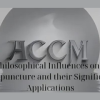






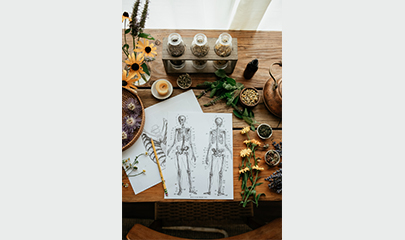
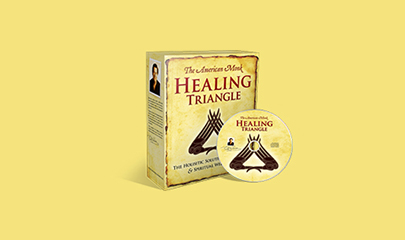
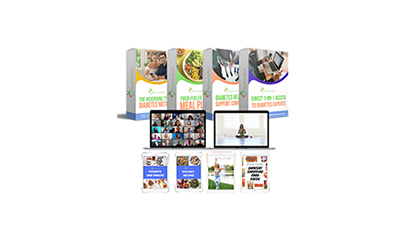






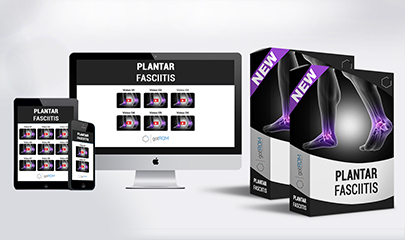
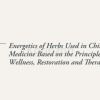
Reviews
There are no reviews yet.